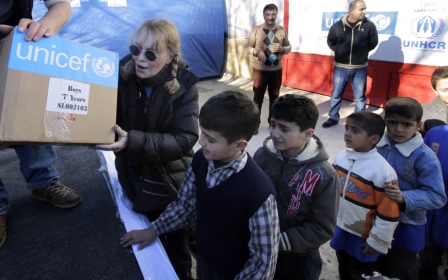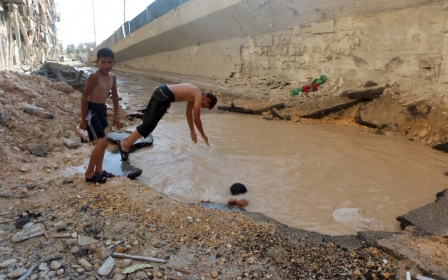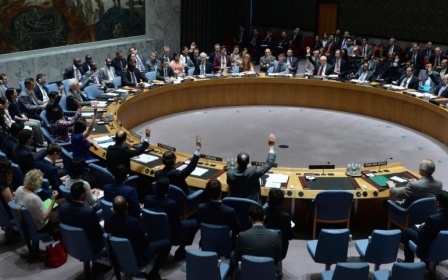Syria’s chemicals haunt the Mediterranean

By Apostolis Fotiadis
ATHENS - Scientists and local communities are expressing serious concern about the ongoing destruction of Syria’s chemical arsenal on board a vessel in international waters in the Mediterranean Sea.
“Neutralisation” of the chemicals, including mustard gas and the raw materials for sarin nerve gas, began earlier this week under Organization for the Prohibition of Chemical Weapons (OPCW) guidelines, on board the specially modified U.S. maritime vessel Cape Ray.
The operation, which is expected to be completed within 60 days, uses Deployable Hydrolysis Systems (FDHS), but the technique is being criticised.
According to Thodoris Tsimpidis, director of the Archipelagos Institute, a Greek non-profit organisation specialising in marine conservation, hydrolysis is not a safe method for neutralising chemicals on board.
“We were invited for a tour of the Cape Ray before the operation but we did not go because whenever we asked something important they replied that it was confidential. We do not understand why scientists are not allowed on board during the operation,” he told IPS.
“The Greek Ministry of Foreign Affairs has not responded to our concerns. Why is Greece sending a submarine to escort the operation and not its specialised maritime vessel that could monitor any sea contamination if this happens?”
Syria agreed to surrender it chemical weapons to international control after a chemical attack with sarin gas on August 21 last year against rebels in disputed areas of the Markaz Rif Dimashq district around Damascus. It is estimated that 281 died in the attack, with some reports raising numbers up to 1,729.
France accused the Assad regime, saying it had proof that it was the perpetrator of the attack but the Syrian regime blamed militants who had taken control of elements of its chemical weaponry.
France, the United Kingdom and the United States threatened the regime with military action but, after Russia’s intervention, Syria asked in September 2013 to join the OPCW and surrender its chemical arsenal for destruction.
Initially Belgium and Norway refused to host the neutralisation process on their territories, while Albania initially accepted, only to retract after public opposition rapidly invalidated plans.
U.S. authorities leading the operation then decided to attempt the destruction of chemicals on board, a process in which over 30 countries and the European Union have been actively involved.
The last consignment of chemicals left Syria on June 23 and was loaded aboard the Danish ship Ark Futura with destination the port of Gioia Tauro in southern Italy. There it was trans-loaded to the Cape Ray, which then sailed to the Mediterranean where the operation is now under way.
The operation has been cloaked in secrecy for fears of terrorist threats but others believe this is due to the precariousness of the operation itself.
On Thursday, members of political organisations and activists met in Chania, Crete, to coordinate protests against the operation. In an effort to break what they said was the “concealment” and “silence” of the big national media they plan to block a U.S. military base on the island for three days and attempt a symbolic sail against Cape Ray.
In an announcement on Wednesday, they said: “We warned them long before they started, by participating, together with thousands of people who reacted once they found out about their plans, in demonstrations and events throughout Greece. They decided, using concealment and silence by the mass media, to move on; we decided to meet them at sea. We are coming!”
Although the exact location of the neutralisation operation is unknown, it is thought to be taking place 100 km west of the island of Crete.
Secrecy about the process has disturbed the local community. “Monitoring by international observers and environmental organisations from the European Union and scientists of the countries directly concerned is necessary,” says professor Evaggelos Gidarakos, head of Laboratory of Toxic and Hazardous Waste Management at the University of Chania in Crete.
“None of those stakeholders have been given access in this case which has become an issue of the American military navy alone. The scientific community has been marginalised, so that even if something goes wrong we will never know.”
The presence of OCPW inspectors on board Cape Ray throughout the operation has not appeased critics. Tsimpidis said that OPCW “is not going to be held accountable” if anything goes wrong.
OCPW, a United Nations body, has continually repeated that all possible safety precautions have been taken for the operation, but it has also clarified that it “bears no responsibility” for any chemical accident and that is the U.S. Navy which will “assume all liabilities”.
IPS approached the OCPW for comments but only received an email answer directing it to the organisation’s FAQ page.
After the neutralization operation has been completed, the Cape Ray will sail to Germany and Finland to deliver the by-products of the operation for further processing
Meanwhile, the Ark Futura will continue on to the United Kingdom and then Finland to deliver chemicals to be destroyed at commercial facilities.
A second cargo ship, the Norwegian vessel Taiko, has already delivered a quantity of chemicals to Finland. The ship is now sailing to Port Arthur, Texas, in the United States, where the last cargo of chemicals will be destroyed at a commercial facility.
New MEE newsletter: Jerusalem Dispatch
Sign up to get the latest insights and analysis on Israel-Palestine, alongside Turkey Unpacked and other MEE newsletters
Middle East Eye delivers independent and unrivalled coverage and analysis of the Middle East, North Africa and beyond. To learn more about republishing this content and the associated fees, please fill out this form. More about MEE can be found here.




